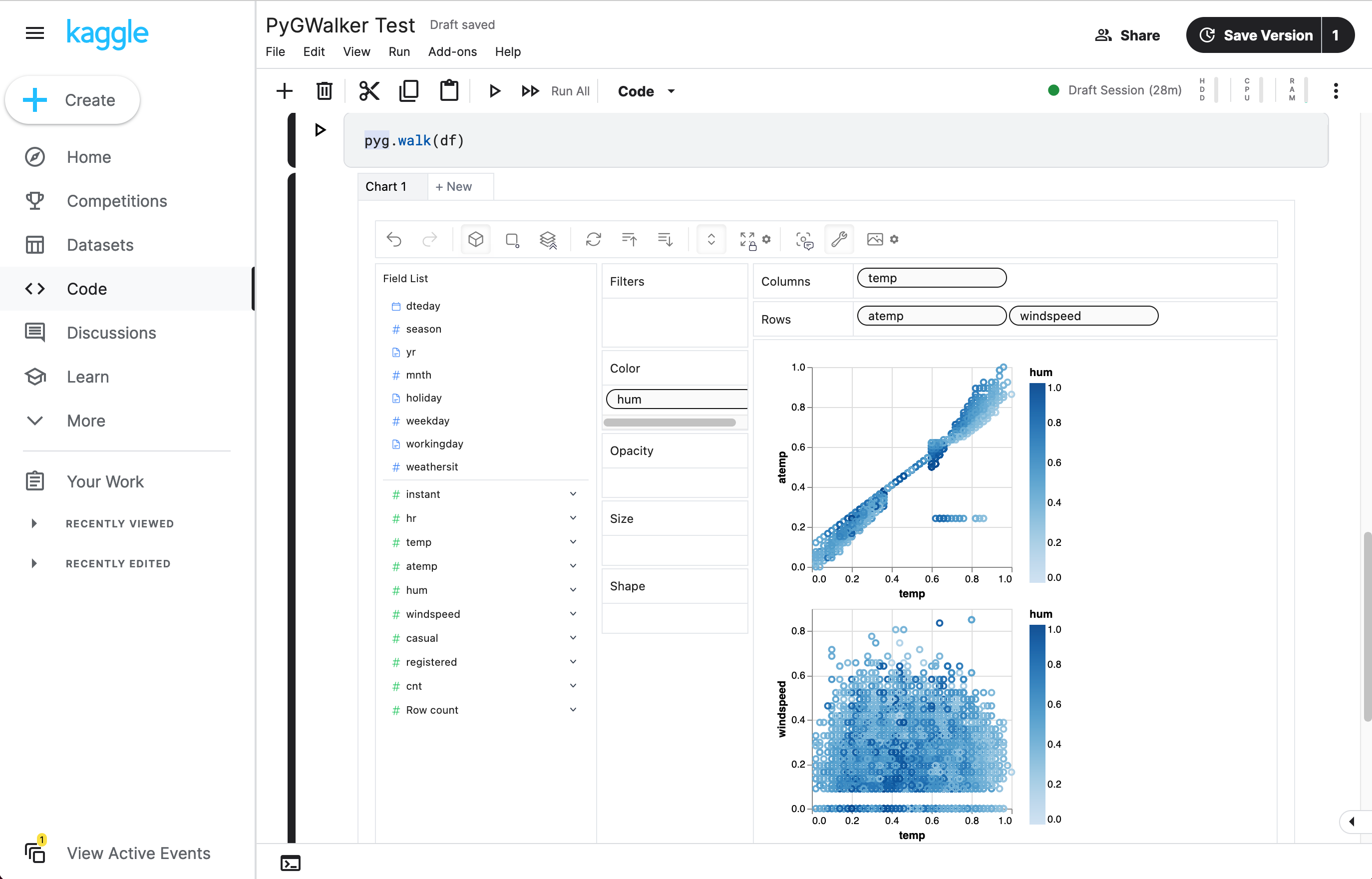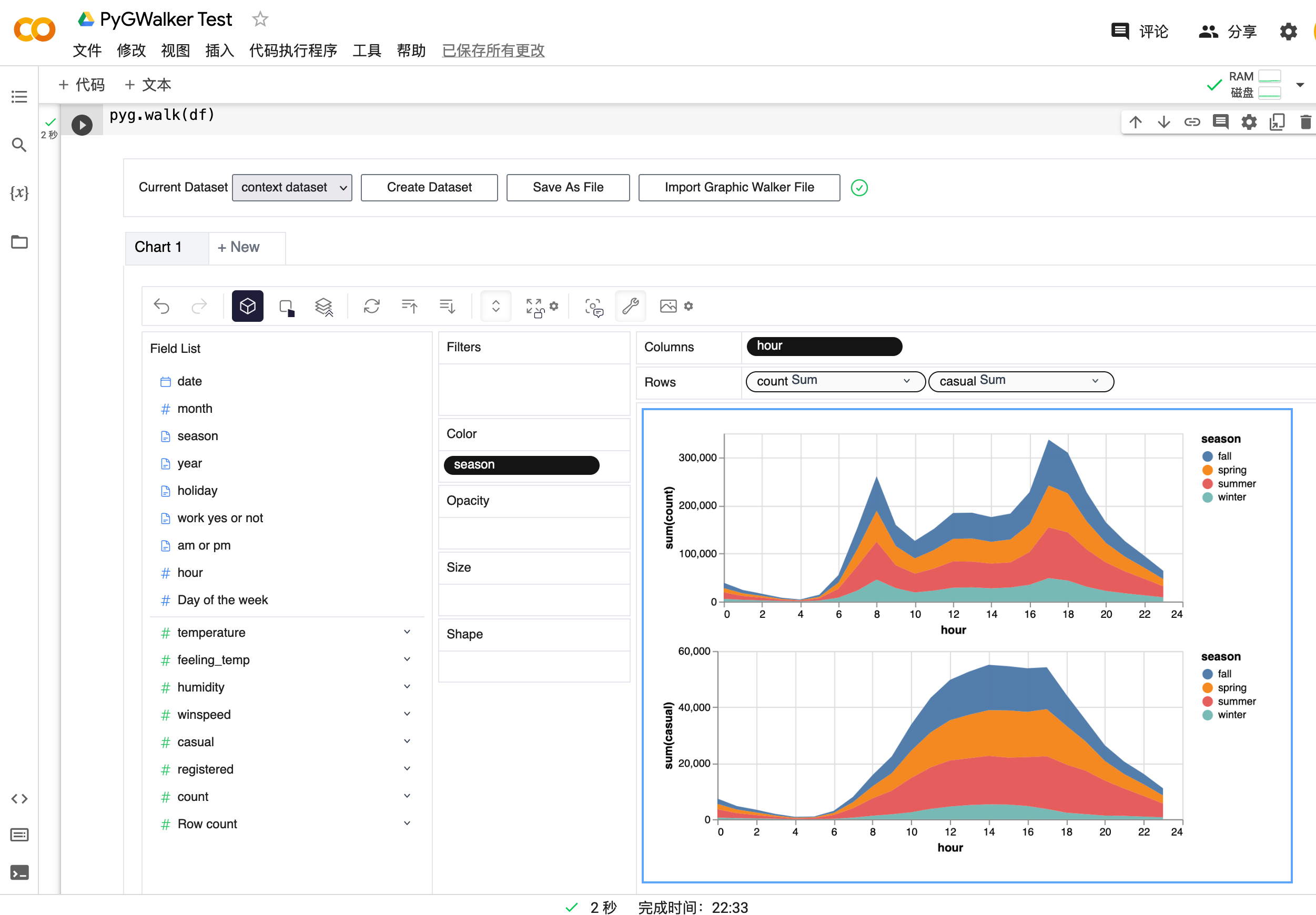Kanaries / pygwalker
- четверг, 23 февраля 2023 г. в 00:13:47
PyGWalker: Turn your pandas dataframe into a Tableau-style User Interface for visual analysis
PyGWalker can simplify your Jupyter Notebook data analysis and data visualization workflow. By turning your pandas dataframe into a Tableau-style User Interface for visual exploration.
PyGWalker (pronounced like "Pig Walker", just for fun) is named as an abbreviation of "Python binding of Graphic Walker". It integrates Jupyter Notebook (or other jupyter-based notebooks) with Graphic Walker, a different type of open-source alternative to Tableau. It allows data scientists to analyze data and visualize patterns with simple drag-and-drop operations.
Visit Google Colab, Kaggle Code, or Graphic Walker Online Demo to test it out!
PyGWalker will add more support such as R in the future.
0.1.4a0, needs more tests)0.1.4a1, needs more tests)| Run in Kaggle | Run in Colab |
|---|---|

|

|
Before using pygwalker, make sure to install the packages through the command line using pip.
pip install pygwalkerImport pygwalker and pandas to your Jupyter Notebook to get started.
import pandas as pd
import pygwalker as pygYou can use pygwalker without changing your existing workflow. For example, you can call up Graphic Walker with the dataframe loaded in this way:
df = pd.read_csv('./bike_sharing_dc.csv', parse_dates=['date'])
gwalker = pyg.walk(df)You can even try it online, simply visiting , Google Colab or Kaggle Code.
That's it. Now you have a Tableau-like user interface to analyze and visualize data by dragging and dropping variables.
Cool things you can do with Graphic Walker:
For more detailed instructions, visit the Graphic Walker GitHub page.